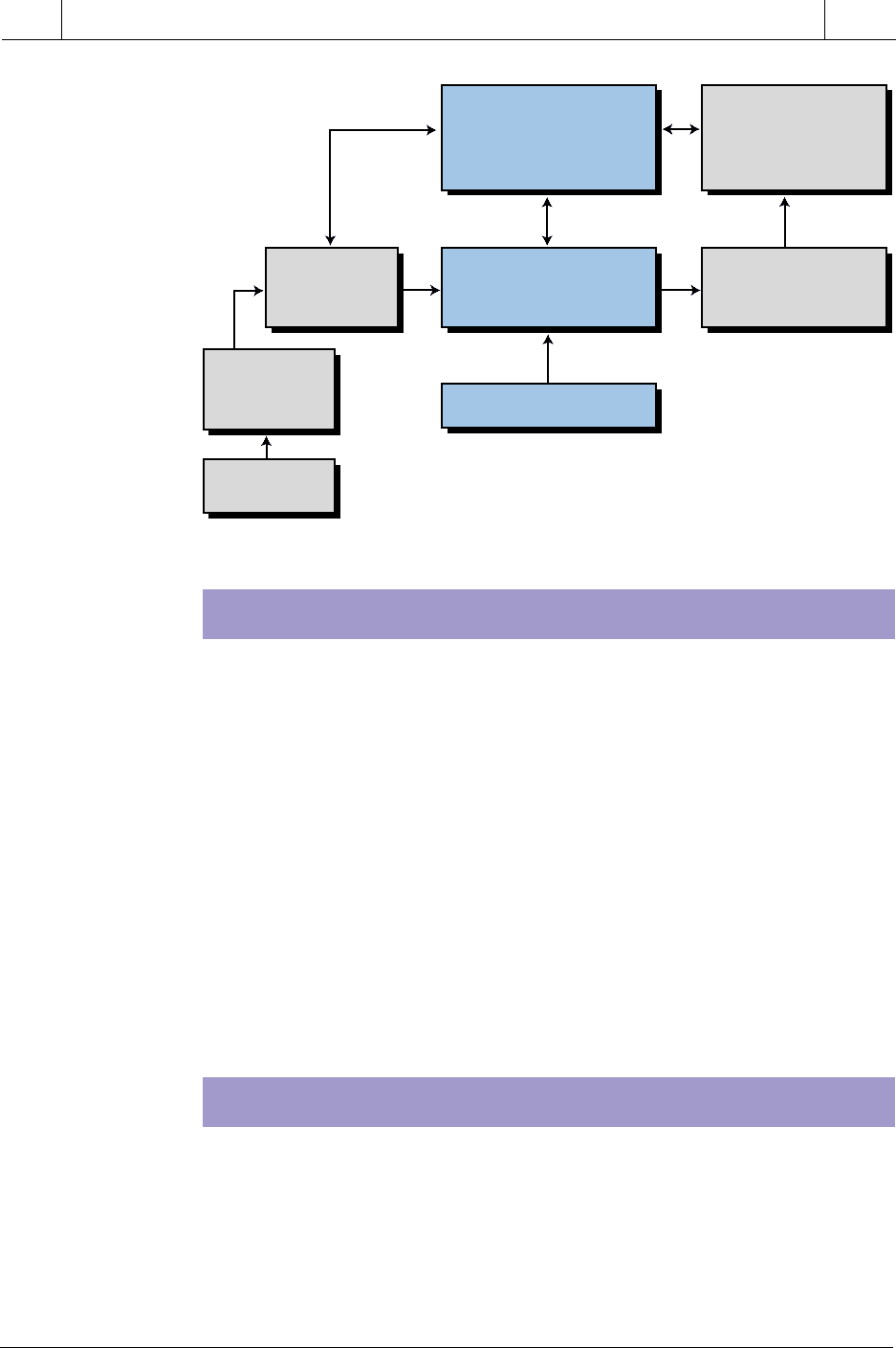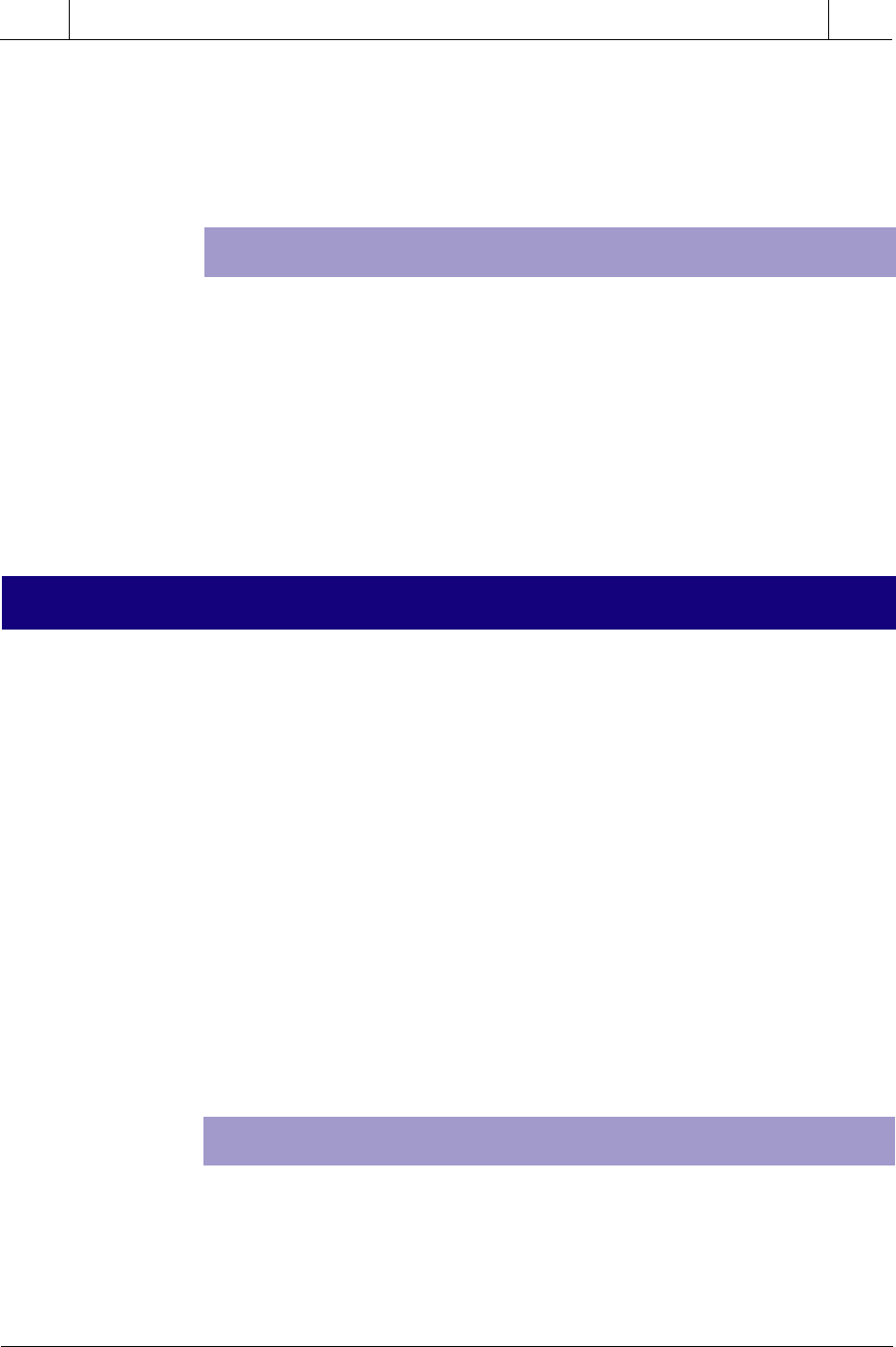Bryan L. Programmable controllers. Theory and implementation
Подождите немного. Документ загружается.


769
CHAPTER
15
Process Controllers
and Loop Tuning
SECTION
4
PLC Process
Applications
Industrial Text & Video Company 1-800-752-8398
www.industrialtext.com
proportional controller
proportional-derivative controller
proportional-integral controller
proportional-integral-derivative controller
quarter-amplitude response
reverse-acting controller
three-position controller
two-position controller
Ziegler-Nichols closed-loop tuning method
Ziegler-Nichols open-loop tuning method
Industrial Text & Video Company 1-800-752-8398
www.industrialtext.com
This page intentionally left blank.

ADVANCED PLC TOPICS
AND NETWORKS
SECTION FIVE
• Artificial Intelligence and PLC Systems
• Fuzzy Logic
• Local Area Networks
• I/O Bus Networks
Industrial Text & Video Company 1-800-752-8398
www.industrialtext.com
Industrial Text & Video Company 1-800-752-8398
www.industrialtext.com
This page intentionally left blank.

ARTIFICIAL INTELLIGENCE
AND PLC SYSTEMS
CHAPTER
SIXTEEN
Computers can figure out all kinds of prob-
lems, except the things in the world that just
don’t add up.
—James Magary
Industrial Text & Video Company 1-800-752-8398
www.industrialtext.com

774
SECTION
5
Advanced PLC
Topics and Networks
Industrial Text & Video Company 1-800-752-8398
www.industrialtext.com
CHAPTER
16
Artificial Intelligence
and PLC Systems
Artificial intelligence (AI) is an area of computer science that has been
around for some time. In fact, the conceptual design of AI was first developed
in the early 1960s. The definition of artificial intelligence varies among
people in the computer industry, making the concept somewhat difficult to
perceive and understand. In general, AI can be defined as the subfield of
computer science that encompasses the creation of computer programs to
solve tasks requiring extensive knowledge.
The software programs that form an AI system are developed using the
knowledge of an expert person (or persons) in the field where the system will
be applied. For instance, a food-processing AI system that involves the
making and packaging of a food product will consist of knowledge obtained
from chemists, food technologists, packaging experts, maintenance person-
nel, and others closely associated with the operation.
In this chapter, we will present AI techniques that can be implemented
through a PLC-based process control system. These techniques will define
the methods for implementing AI into the process. The result will be a system
that can successfully diagnose, control, and predict outcomes based on
resident knowledge and program sophistication.
CHAPTER
HIGHLIGHTS
In previous chapters, we highlighted both simple and complex PLC
applications. In this chapter, we will present an area of PLC applications that
goes one step beyond these—artificial intelligence. We will explain the basics
of artificial intelligence (AI) systems by explaining their organization and
methodology. We will also discuss how each of the three types of artificial
intelligence systems—diagnostic, knowledge, and expert—work. Finally,
we will present an example of an AI application to further explain how these
complex systems operate. After you finish learning about artificial intelli-
gence, you will be ready to explore fuzzy logic, another advanced application
that involves PLCs.
16-1 INTRODUCTION TO AI SYSTEMS
16-2 TYPES OF AI SYSTEMS
An exact classification of the types of artificial intelligence systems is very
difficult to obtain because of the varying definitions of AI applications. For
the purposes of this text, however, we will divide artificial intelligence into
three types of systems:
• diagnostic
• knowledge
• expert

775
CHAPTER
16
Artificial Intelligence
and PLC Systems
SECTION
5
Advanced PLC
Topics and Networks
Industrial Text & Video Company 1-800-752-8398
www.industrialtext.com
Each of these types of AI systems have similar characteristics, and in fact, the
systems evolve sequentially. As the systems become more sophisticated, the
size of the database grows and the extent of how the process data is compiled
and interpreted increases.
DIAGNOSTIC SYSTEMS
Diagnostic AI systems are the lowest level of artificial intelligence imple-
mentation. These systems primarily detect faults within an application, but
they do not try to solve them. For example, a diagnostic system can diagnose
a pump fault by detecting a loss of tank pressure or by reading flow meter
values.
A diagnostic system reaches a fault conclusion through inferring techniques
based on known facts (knowledge) introduced into its detection system. This
type of AI is used in applications that have a small knowledge and database
structure. Diagnostic systems typically make GO or NO GO decisions and
sometimes provide information about the fault’s probable cause.
KNOWLEDGE SYSTEMS
A knowledge AI system is, in reality, an enhanced diagnostic system.
Knowledge systems not only detect faults and process behaviors based on
resident knowledge, but also make decisions about the process and/or the
probable cause of a fault.
In the batching system example mentioned in the diagnostic system section,
a knowledge system would go beyond just diagnosing the fault. It would also
provide suggestions about probable faulty devices, as well as make a decision
about whether to continue the process (if the fault is noncritical) or to shut
down (if the fault is critical). The system bases these decisions on its
programmed knowledge and a set of rules that defines each fault condition.
It is possible that the detection of a fault in the previous example could have
been a false alarm. As part of its enhanced features, a knowledge system
checks whether the elements signaling the fault condition (i.e., flow meter,
pressure transducer) are operating correctly. It then compares these observa-
tions (process feedback) with the procedures and measures based on this
information. For example, if a fault does occur and it is a valid noncritical
fault, the control system may issue continue process, stop after finished, and
alert personnel commands.
EXPERT SYSTEMS
An expert AI system is the top of the line in AI-type applications; it has all
of the capabilities of a knowledge system and more. An expert system
provides an additional capability for examining process data using statistical

776
SECTION
5
Advanced PLC
Topics and Networks
Industrial Text & Video Company 1-800-752-8398
www.industrialtext.com
CHAPTER
16
Artificial Intelligence
and PLC Systems
analysis. The use of statistical data analysis lets the system predict outcomes
based on current process assessments. The outcome prediction may be a
decision to continue a process in spite of a fault detection.
For the example used in the other two types of AI systems, an expert system
may decide to continue the batching operation until the noncritical fault
generates another fault. The system might arrive at this decision because the
average pressure sensed in the mixing reactor tank is within tolerance limits
(i.e., readings observed about the mean). Thus, the system continues the
batching operation in spite of the fact that the flow meter reported a loss of
flow. The system then continues production and alerts personnel that pump
and flow meter feedback may have been lost.
The knowledge introduced into an expert system is more complex than in the
other types of AI systems; therefore, expert systems generate more data
verification (feedback information). The decisions made by expert systems
also require more sophisticated software programming, since their decision
trees involve more options and attributes.
The implementation of an expert AI system requires not only extra program-
ming effort but also more hardware capability. The total system will need
more transducers to check other transducers and field devices. Moreover, the
PLC will require the use of two or more processors to implement the control
and intelligence programs. The speed of the system must also be fast so that
it can operate in real time. Furthermore, the system’s memory requirements
will be larger, since knowledge data must be incorporated and stored into the
AI system.
16-3 ORGANIZATIONAL STRUCTURE OF AN AI SYSTEM
A typical artificial intelligence system consists of three primary elements:
• a global database
• a knowledge database
• an inference engine
Figure 16-1 shows a block diagram of an AI system’s architecture. As the
figure illustrates, the AI system must receive its knowledge from a person
who thoroughly understands the process or machine being controlled. This
individual, called the expert, must communicate all information about
system maintenance, fault causes, etc. to the knowledge engineer, the person
responsible for system implementation. The process of gathering data from
the expert and transmitting it to the knowledge engineer is known as
knowledge acquisition.

777
CHAPTER
16
Artificial Intelligence
and PLC Systems
SECTION
5
Advanced PLC
Topics and Networks
Industrial Text & Video Company 1-800-752-8398
www.industrialtext.com
Figure 16-1. Artificial intelligence system architecture.
GLOBAL DATABASE
The global database section of an AI system contains all of the available
information about the system being controlled. This information mainly deals
with the input and output data flow from the process. The global database
resembles a storage area where information about the process is stored and
updated. The AI system can access the data in this area at any time to perform
statistical analysis on historical process control data, which in turn can be used
to implement AI decisions.
The global database resides in the memory of the control system implement-
ing the artificial intelligence. If a PLC is used to implement a diagnostic AI
system, the global database will most likely be located in the storage area of
the PLC’s data table. If a PLC is used in conjunction with a computer or
computer module to implement an AI system, then the global database will
probably be located in the computer, the computer module’s memory, or a
hard disk storage subsystem.
KNOWLEDGE DATABASE
The knowledge database section of an AI system stores the information
extracted from the expert. Like the global database, this database includes
information about the process; however, it also stores information about
faults, along with their probable causes and possible solutions. Moreover, the
knowledge database stores all of the rules governing the AI decisions to be
made. The more involved the AI system, the larger the knowledge database.
Knowledge Database
Knowledge representation,
specific knowledge
information
Global Database
Memory, system status
Inference Engine
Control strategy,
conflict resolution
User
Action
Taken
Knowledge
Acquisition
Knowledge
Engineer
Expert
Feedback
Information

778
SECTION
5
Advanced PLC
Topics and Networks
Industrial Text & Video Company 1-800-752-8398
www.industrialtext.com
CHAPTER
16
Artificial Intelligence
and PLC Systems
Accordingly, the knowledge database of a diagnostic system is less complex
than that of a knowledge system; likewise, the knowledge database of a
knowledge system is less sophisticated than that of an expert system. The
knowledge database is stored in the section of the system memory that
implements the AI techniques.
INFERENCE ENGINE
An AI system’s inference engine is the place where all decisions are made.
This section uses the information stored in the knowledge database to arrive
at a decision and then execute all applicable rules and decisions about the
process. The inference engine also constantly interacts with the global
database to examine and test real-time and historical data about the process.
The inference engine usually resides in the main CPU (i.e., the one that
performs the AI computations). However, in a PLC-based system, the
inference engine may or may not be stored in the main CPU, depending
upon the system’s complexity (i.e., diagnostic, knowledge, or expert).
16-4 KNOWLEDGE REPRESENTATION
Knowledge representation is the way the complete artificial intelligence
system strategy is organized—that is, how the knowledge engineer repre-
sents the expert’s input. This representation is stored in the knowledge
database of the AI system. In rule-based knowledge representation, the
expert’s knowledge is transformed into IF and THEN/ELSE statements,
which facilitate actions and decisions.
All control systems that implement artificial intelligence, whether diagnostic,
knowledge, or expert, execute the control strategy (via the software control
program) in the inference engine. Whenever a decision must be made due to
a fault or another situation, the inference engine refers to the knowledge
representation to obtain a decision about the probable cause. This decision
is the result of a group of software subroutines. Once the knowledge database
reaches an AI decision, the inference engine will determine the appropriate
course of action. Depending on the control strategy formulation (main
program), the inference engine may, at this time, refer to the global database
to verify data or obtain more information.
RULE-BASED KNOWLEDGE REPRESENTATION
Rule-based knowledge representation defines how the expert’s
knowledge is used to make a decision. The rules used are either antecedent
(IF something happens) or consequent (THEN take this action). For example,
to the question, What causes the volume in the tank to drop?, the expert may
respond with the answer, a malfunctioning tank system. The knowledge
